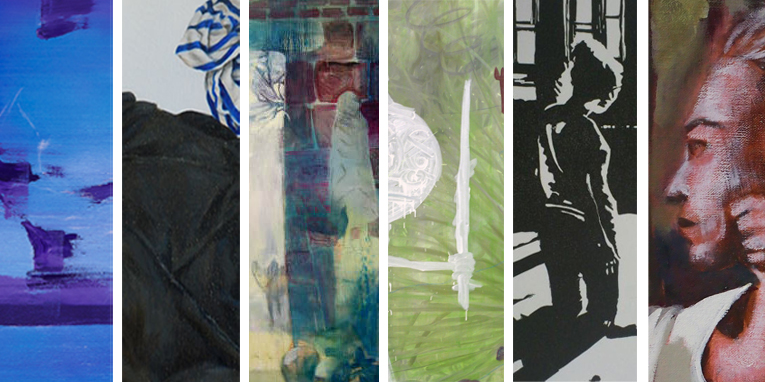|
------------------------------------------------------------------------------------------------------------------------------------------------------ Group Show: "Somebody’s room" ------------------------------------------------------------------------------------------------------------------------------------------------------ Vernissage 1st of December, 4 pm Spinnereistr. 7, hall 18, 2nd floor click here for flyer 
Darryn Ansted Aika Furukawa Mitja Ficko Samuel Vanderveken Marit Dik Irene Wellm Australia Japan Slovenia Belgium The Netherlands Australia Private rooms are sacred spaces. The diffusion of the membrane between private and public space is often taken up as a subject in art. In Romantic painting, it is not primarily about possible detailed genre studies but the placement of a idea or a certain, mostly melancholic-colored emotional state. The window was thereby a popular motif as a lock between inside and outside. The figures stand at the window and look into the distance, an expression of a deep sense of longing for a better world. The stronger social life grew in dynamism and velocity, the more the citizen moved back into his own living room. He sought the intimate, private retreat rather than a strongly accelerating progress-euphoria. In his balcony-picture Manet showed the blurring boundaries between interior and exterior space and thus the privacy of the individual, of public spectacle and entertainment pleasure. While the so-called "Intimists" rather captured the harmless aspect of domestic life, there were others who expressed the emotional tensions, the real inner life of man. The interior was conceived as an extension of the human subconscious and thus a projection of anxiety and other weirdness. Hopper and Hitchcock transform the private place to target the voyeuristic gaze. Thus they illustrate a sexually motivated breaking of the boundaries of the private rooms that were still prevalent in the Biedermeier period. The interior is the exterior landscape of the human soul, and thus an appropriate indicator for the feeling of a time with its tensions, desires, hopes and fears. The artist's studio, especially in such an artists’ residency as LIA, is a threshold space between public and private life. On the one hand, the artist lives in it, thus creating a private retreat. On the other hand it also serves as a public exhibition space for works created therein. The art can take representative intermediary roles and give the viewer access to the most intimate and private place: the human imagination. The image is thus the exterior of the mental interior of the artist. In December, LIA shows the works of resident artists who have dealt with the city of Leipzig, its people and the history of art during their time in the Spinnerei. We thank LIA main partner BMW and the Cultural Office of the City of Leipzig as well as the Embassy of Slovenia Berlin,
the Australia Council for the Arts and Japanese Agency for Cultural Affairs for their kind support.
|